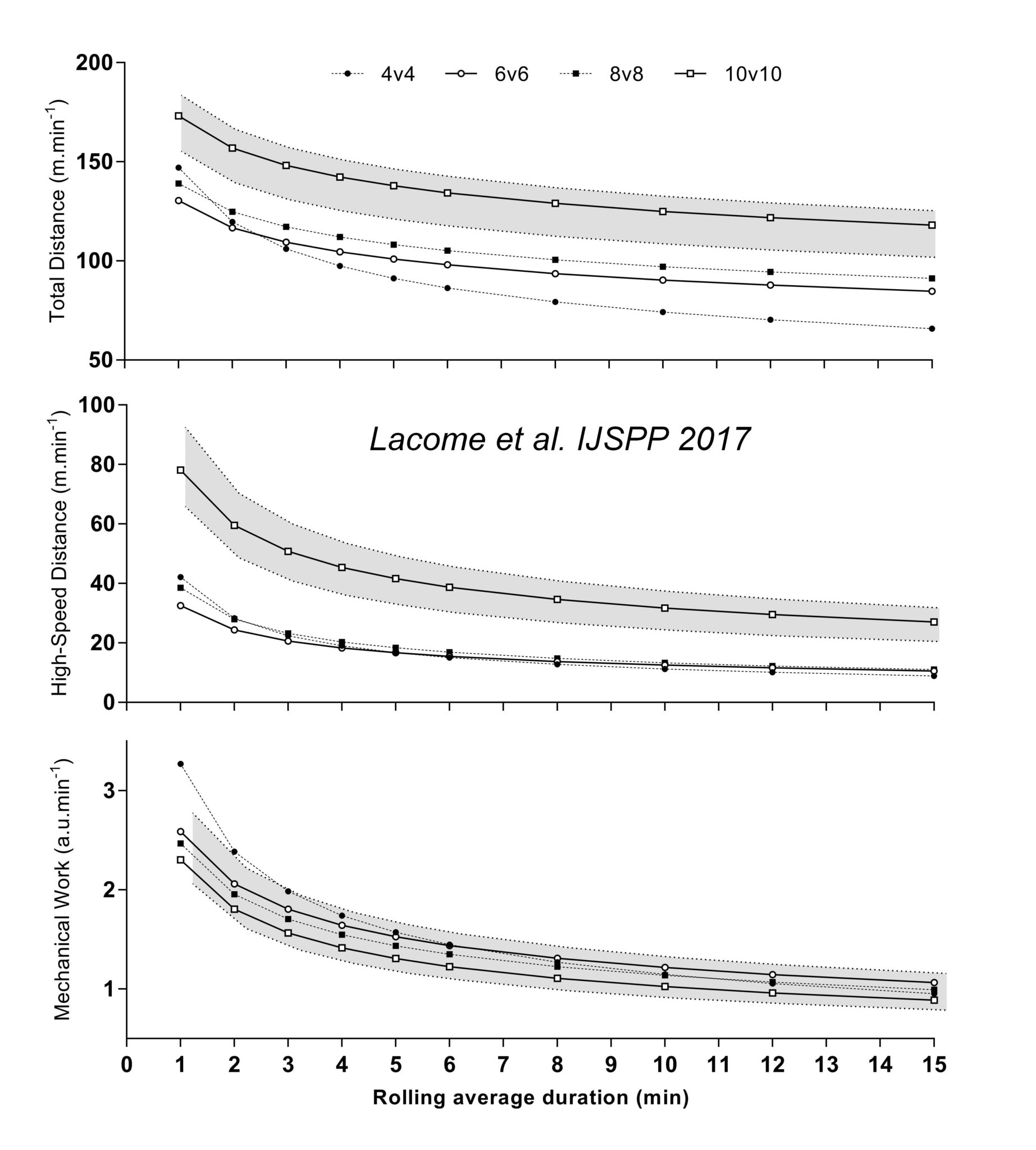Small-Sided Games in elite soccer: Does one size fits all?
Lacome M., B.M. Simpson, Y. Cholley, P. Lambert, and M Buchheit. Small-Sided Games in elite soccer: Does one size fits all? IJSPP, In press 2017.
Full Text here
Abstract
Purpose: To compare the peak intensity of typical Small Sided Games (SSGs) with those of official matches in terms of running demands and mechanical work over different rolling average durations and playing positions.
Method: Data were collected in 21 players (25±5 y, 181±7 cm, 77±7 kg) belonging to an elite French football team. SSG data were collected over two seasons during typical training sessions (249 files, 12±4 per player) and official matches (n=12). Players’ locomotor activity was recorded using 15-Hz GPS. Total distance (TD, m), high-speed distance (HS, distance above 14.4 km.h-1, m) and mechanical work (MechW, a.u) were analysed during different rolling average periods (1 to 15 min). The SSGs examined were 4v4+Goal Keepers (GKs), 6v6+GKs, 8v8+GKs and 10v10+GKs.
Results: Peak TD and HS during 4v4, 6v6 and 8v8 were likely-to-most likely largely lower than during matches (ES: -0.59,±0.38 to -7.36,±1.20). MechW during 4v4 was likely-to-most likely higher than during matches (1-4-min; 0.61±,0.77 to 2.30±,0.64). Relative to their match demands, central defenders (CD) performed more HS than other positions (0.63±,0.81 to 1.61±,0.52) during 6v6. Similarly, central midfielders (CM) performed less MechW than the other positions during 6v6 (0.68,±0.72 to 1.34,±0.99) and 8v8 (0.73,±0.50 to 1.39,±0.32).
Conclusion: Peak locomotor intensity can be modulated during SSGs of various formats and durations to either over- or underload match demands, with 4v4 placing the greatest and the least emphasis on MechW and HS, respectively. Additionally, CD and CM tend to be the most and least overloaded during SSGs, respectively.
Key words: Small sided games, soccer, peak intensity, match demands, periodisation,

Peak locomotor intensity during the different small-sided games compared with match demands as a function of each rolling average period for all players pooled together (grey zones stand for match average ± standard deviations). Confidence intervals for mean values are not provided for clarity.



